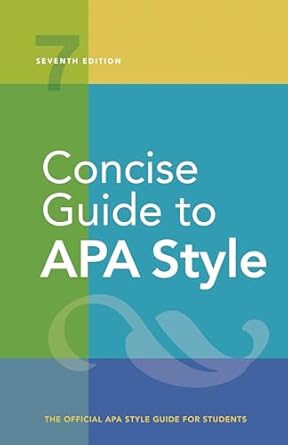[toc]
referencing online articles a clear guide
Concise Guide to APA Style: 7th Edition (OFFICIAL)
Page 251 Review
Referencing Online Periodicals: A Detailed Analysis
This excerpt provides a comprehensive guide to referencing online periodicals, addressing nuances often overlooked in simpler citation styles.
Let’s delve into the key elements and their significance.
Abbreviated Titles and Source Identification
The initial point emphasizes the importance of using correct, though abbreviated, journal titles. “reproduce abbreviated titles from other reference lists or data bases (e.g, if you find an article from JAMA Pediatrics in PubMed Central, use JAMA Pediatrics in the reference, not PubMed Cen tral’s abbreviation of JAMA Pediatr).” This ensures clarity and allows readers to easily locate the original source.
It warns against relying solely on the abbreviation used by a database, urging users to prioritize the journal’s own abbreviated title.
Volume, Issue, and Page Numbers
The excerpt then moves on to the specific formatting of volume, issue, and page numbers:
- “Italleive the volume number”
- “Include the issue number for all periodicals that have issue num bers, Place the issue number, enclosed in parentheses, immediately after the volume number (with no space in between), followed by a comma, Do not italicize the issue number, the parentheses, or the comma after the issue number”
- “Insert the page range (or article number; see Section 9,27) after the issue number, without italics, Separate page numbers in a range with an en dash, followed by a period, Separate discontinu ous page numbers with commas, 39=47, 50”
This level of detail ensures consistency and readability.
The specific instructions regarding italics and punctuation are crucial for maintaining a uniform citation style.
Finishing the Reference and Handling Missing Information
The excerpt concludes the basic formatting instructions by stating: “Finish the periodical information portion of the source clement with a period, followed by a DOL or URL as applicable (see Sec tions 9.44-9,36)”.
This highlights the importance of providing a persistent identifier or URL to facilitate access to the online resource.
It then addresses the common issue of missing information in online periodicals: “Many online periodicals (eg, newspapers, blogs) publish articles without volume, issue, and/or page numbers or article numbers, Omit these elements from the reference if they are not present in the cited work”.
This practical advice acknowledges the variability of online publications and provides a clear guideline for handling incomplete data.
Article Numbers (eLocators)
Special attention is given to articles with article numbers, or “eLocators”: “For articles with article numbers (which may be called “eLocators” or another term), write the word “Article” (capitalized) and then pro vide the article number instead of the page range (see Chapter 10, Example 6), PLOS ONE, 11(7), Article eO158474”.
This section clearly outlines how to cite articles using this system, which is increasingly common in online journals.
The document also clarifies that if an article with an article number *also* has numbered pages, those page numbers are used for in-text citations but not in the reference list entry:
“[fan article with an article number also has numbered pages (such as ina PDP), those page numbers may be used for in-text citations (see Sections 8.28 and 8.25) but do not appear in the reference list entry, 3DuNnOsS”
Examples Provided
The excerpt provides useful examples of how to cite various types of online periodicals, including online newspaper articles, blog posts, and articles with article numbers.
For example, “The New York Times,” is given as an example of a periodical title.
And “PLOS ONE, 11(7), Article eO158474” is given as an example of how to cite a journal using an article number.
Overall Significance
This detailed guide to referencing online periodicals is invaluable for students, researchers, and anyone who needs to cite online sources accurately and consistently.
By following these guidelines, you can ensure that your citations are complete, accurate, and easy to follow, contributing to the credibility and clarity of your work.
The attention to detail, particularly regarding punctuation and handling missing information, sets this guide apart from more general citation resources.
In summary, this excerpt delivers a clear, precise, and thorough explanation of how to properly cite online periodicals, making it an essential resource for academic and professional writing.
Buy full ebook for only $18: https://www.lulu.com/shop/american-psychological-association/concise-guide-to-apa-style-7th-edition-official/ebook/product-rmzpq54.html?page=1&pageSize=4
Referencing Online Articles A Clear Guide
Read more: Fragmented Realms: An Ebook Excerpt Analysis

